This month, Kay Benseman and her niece and nephews are reviewing four recently published books, including translations of older English editions and a bilingual book, too. From Tauranga Moana, Hinengākau Cameron is 12 years old, her tungāne, Te Kaponga and Mangō-Ururoa are nine and just newly seven years old respectively. Ko Ngāti Ranginui, Ngāti Rangiwēwehi, Ngāti Hinerangi ō rātou iwi.
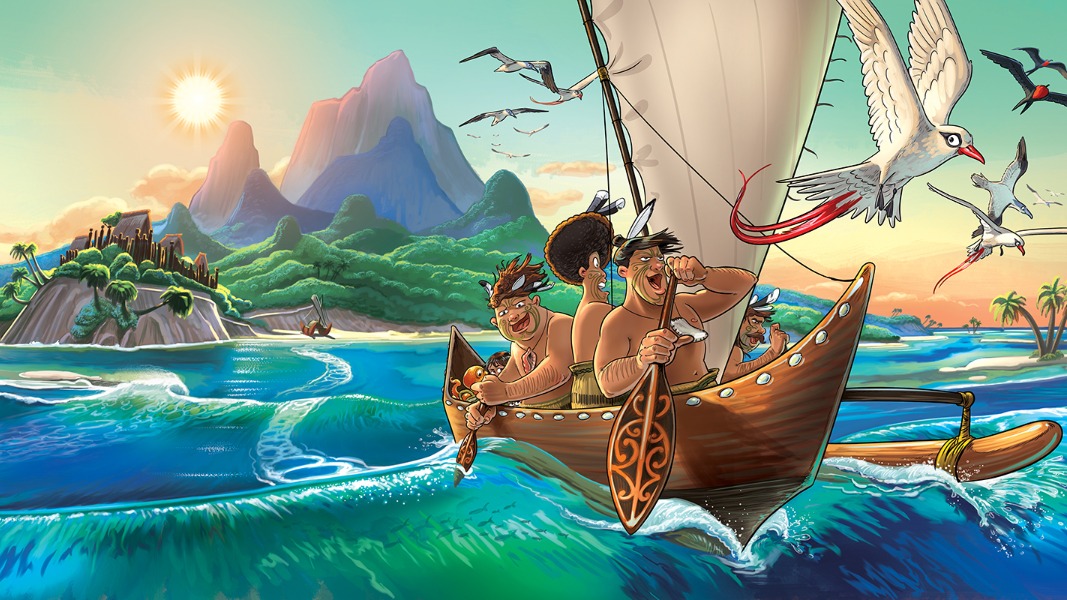
Hāpata, te Kurī Māia o te Moana, nā Robyn Belton i tuhi, nā Ross Calman I whakamāoritia (Ngāti Toa, Ngāti Raukawa and Ngai Tahu)nā Hēmi Kelly i whakamāoritia (Ngāti Maniapoto, Ngāti Tahu-Ngāti Whāoa)
Hinengākau – He tino rawe te kaupapa o te pukapuka; kia tuhi he pūrākau tūturu o neherā. I mau rawa te kōrero i ahau, i mataku ahau ka toromi te kurī.
Te Kaponga – He pai engari ka kitea tonutia te pene rākau. He pai ngā kara.
Mangō-Ururoa – He māmā ki te pānui i te nuinga o ngā kōrero engari kāore i te mōhio ētahi kupu
This is a brilliant te reo Māori version of Robyn Belton’s tale of courage. It’s a New Zealand classic, based on the true story of Herbert, a beloved dog who was lost at sea for over 30 hours and then rescued! It’s great to see more well-known children’s picture books, such as this, being translated into te reo Māori publications.
This translation by Ross Calman (Ngāti Toa, Ngāti Raukawa and Ngai Tahu) is clever and evocative. He has previously translated the delightful te reo Māori versions of Donovan Bixley’s books Ngā Wīra o te Pahi and Te Pāmu o Koro Meketānara. Disappointingly, his name credit is omitted from the front cover of the book Hāpata, te Kurī Māia o te Moana.
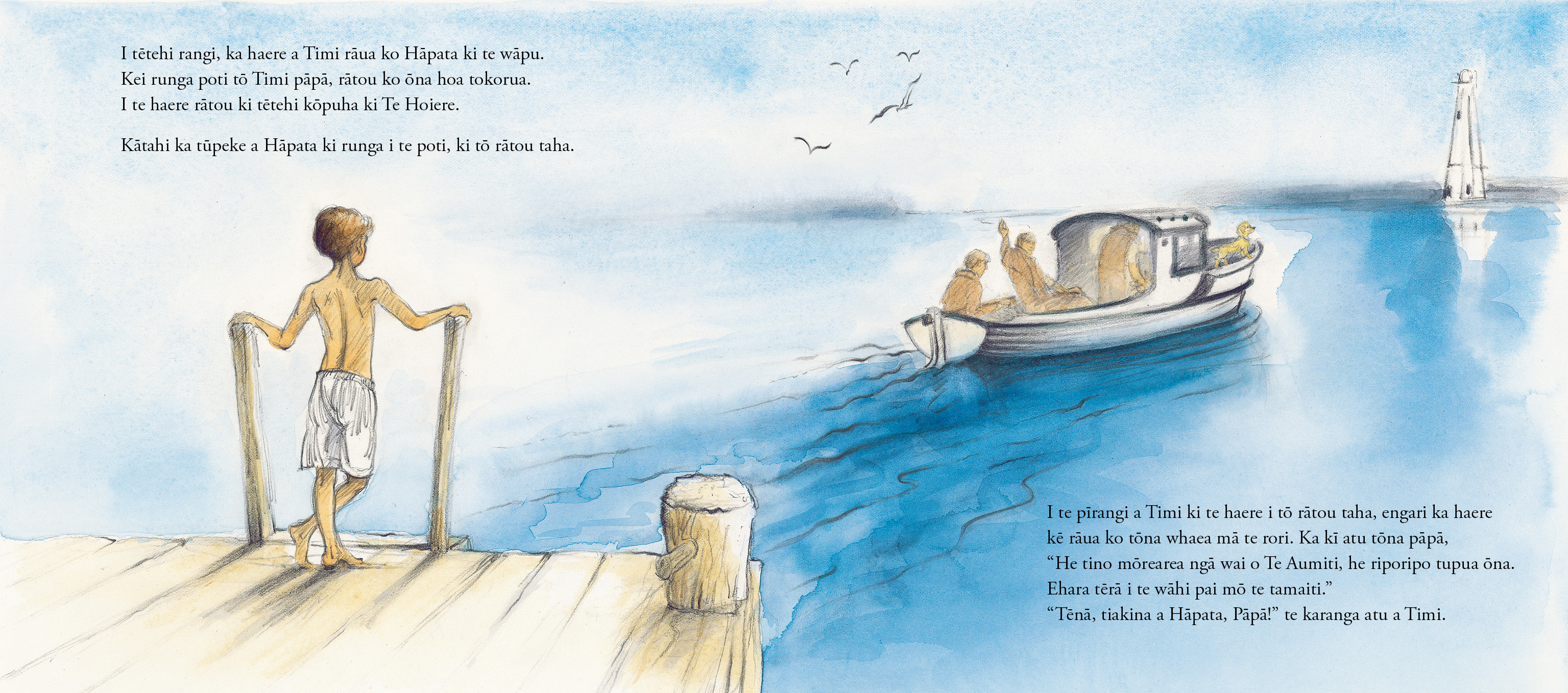
Robyn Belton is the original author and she has also carefully illustrated each page in watercolours. She also illustrated the popular Greedy Cat books by Joy Cowley, among many other titles. The artwork depicts scenes that could be set a century ago, so I was surprised to discover that the actual event took place in 1986 and the English publication of Herbert the Brave Sea Dog was in 2008.
My young son loved the tension of the tale and that the main character was a kurī. Throughout the book, he was enthralled and desperate to discover the fate of this brave wee dog. However, as with the original, I felt that the story itself ends a little abruptly, without any certainty that this determined pet is okay. The final few pages and illustrations are not especially reassuring, we see Hāpata in Timi’s arms with his eyes closed, without being told that he definitely lived! We were reassured by the historical news articles included on the inside cover – you will be pleased to know that Hāpata did indeed survive!
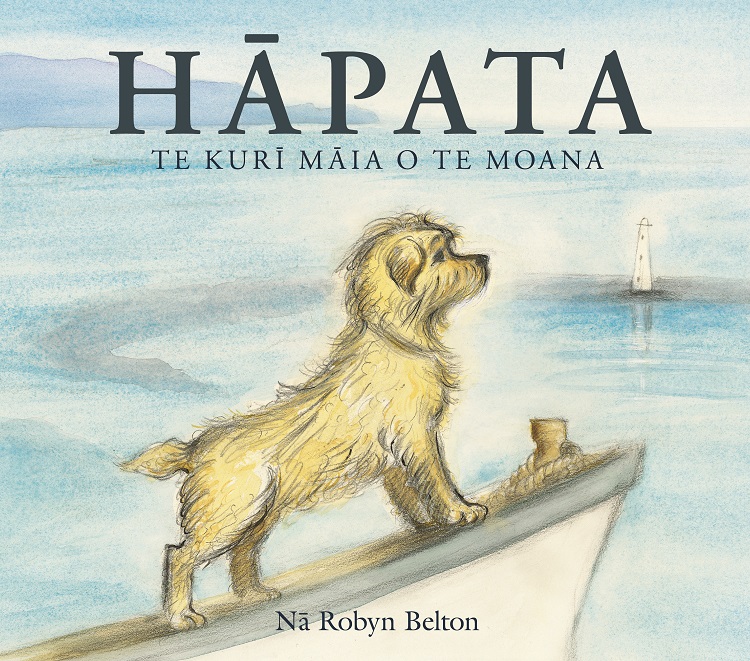
Hapata, te Kuri Maia o te Moana
nā Robyn Belton i tuhi, nā Hēmi Kelly i whakamāoritia (Ngāti Maniapoto, Ngāti Tahu-Ngāti Whāoa)
Published by Potton & Burton
RRP: $20.00
Paraweta, nā Stephanie Blake i tuhi, nā Karena Kelly i whakamāoritia
Hinengākau & Te Kaponga – He tino pai te reo. He māmā rawa ki te pānui, he pai ake ki ngā tamariki pakupaku kātahi anō kia ako ki te pānui.
Mangō-Ururoa – He pikitia katakata, he pai tonu te pikitia kotahi ki ia whārangi, mō tēnei tū momo pukapuka.
Hinengākau – He katakata tēnei pukapuka nā te mea ka kai tētahi wuruhi i te rāpeti. I te mutunga, ka mea mai “patero!” Tino ohorere au i te wā i kōrero tika te kupu.
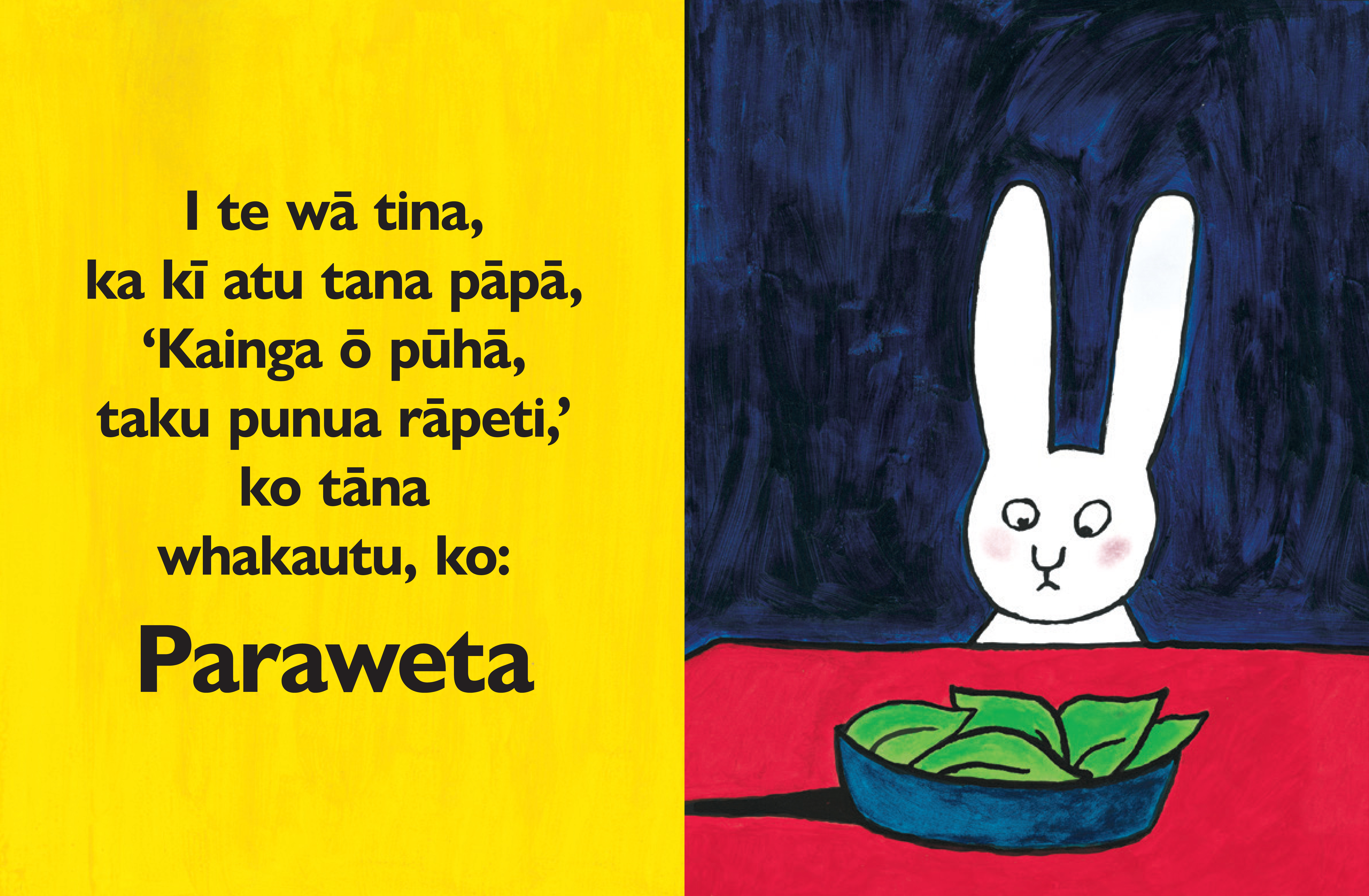
What a hilarious, gorgeous translation by Karena Kelly of this popular Gecko Press publication. She has previously translated Julia Donaldson’s wonderful He Wāhi i te Puruma (read The Sapling’s review here). This is a really fun book that is easy to read and understand and is perfect for beginner te reo speakers and very young children.
I’ve found that certain authors and types of stories seem to more naturally flow in the Māori language, which may depend on how the translator responds to them. Karena Kelly seems to have written this from the perspective of a māmā who regularly shares pukapuka with her own tamaiti. However, I also think that this particular book’s irreverent humour is especially well suited to te reo Māori.
I also think that this particular book’s irreverent humour is especially well suited to te reo Māori.
When I was a children’s librarian, Poo Bum was always a favourite of mine to read aloud to tamariki at storytime (Karena seems to enjoy this, too). I loved seeing the shocked expressions of the senior library patrons as much as hearing the delighted giggling of the junior ones in response.
You can read an interview with Karena Kelly here.
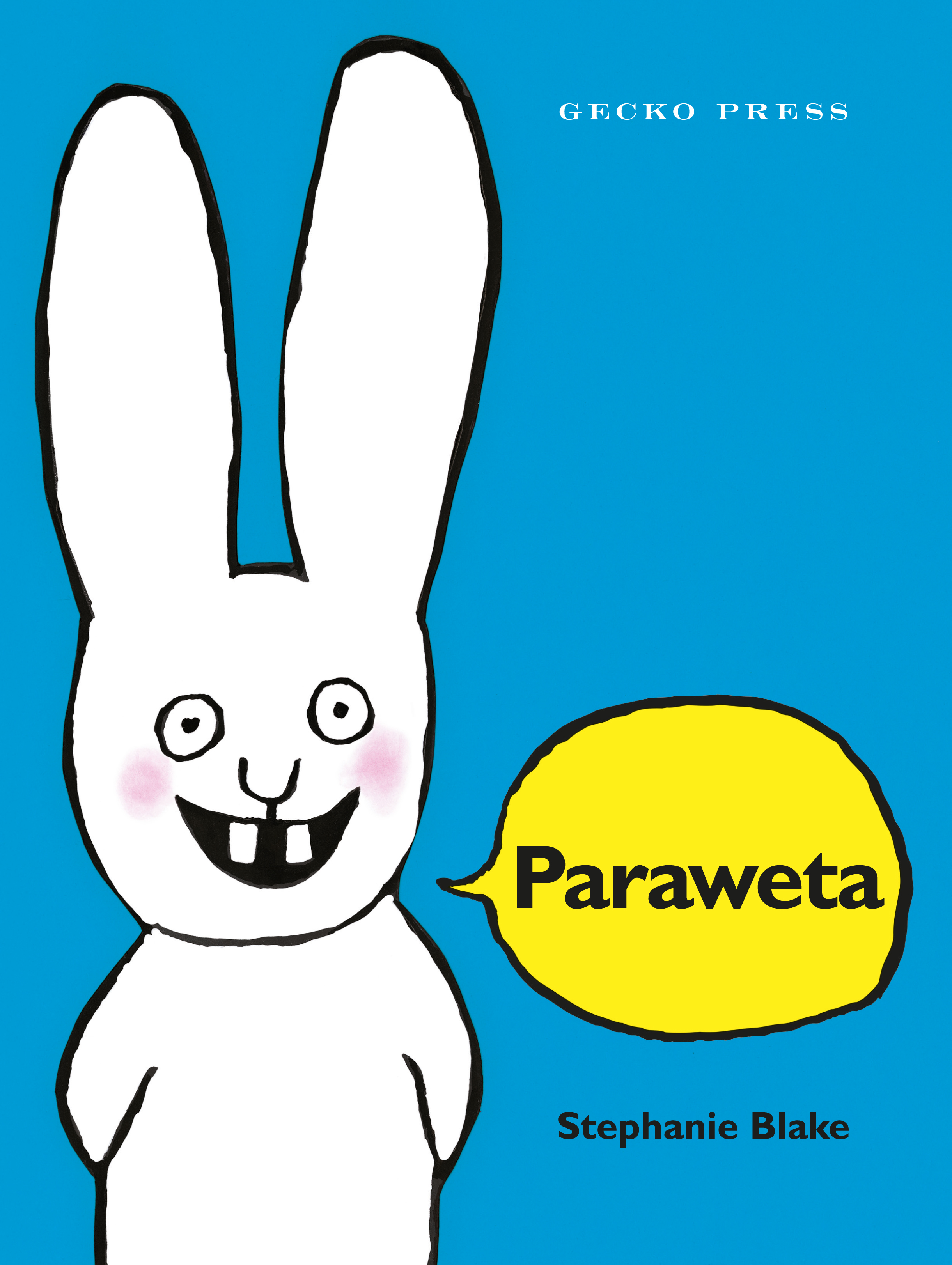
Paraweta
nā Stephanie Blake i tuhi, nā Karena Kelly i whakamāoritia
Published by Gecko Press
RRP: $20.00
Ko Mauao te Maunga, Legend of Mauao, nā Debbie McCauley i tuhi, nā Debbie Tipuna ngā pikitia, ngā Tamati Waaka i whakamāoritia
Hinengākau, Te Kaponga & Mangō-Ururoa – He pai te reo mō te hunga kaha ki te pānui, ehara mō te tamaiti pakupaku. Heoi, kāore he tino pai tētahi pukapuka reo rua ki a mātou. Pai ake te pukapuka reo Māori anake.
Te Kaponga – Ehara ngā pikitia he toi Māori, he āhuatanga Pākehā tō ngā whakaahua o ngā kiripuaki.
Hinengākau – Ko te nuinga o ngā kōrero, koina hoki te kōrero pūrākau e matua mōhio mātou. Tino pai kua tuhi tētahi pukapuka e pā ana ki tō mātou maunga Mauao. Kāore he raru kua tuhi he Pākehā te pukapuka, heoi anō he pai ake inā tito he Māori o Tauranga kē.
This book is obviously very well-researched and is Debbie McCauley’s third publication about the rohe. She is not only an author, but also a librarian at Tauranga City Library and this book began in 2012 as a resource she’d made for class visits to the library. It is very thorough; there are 16 pages of reference information including a glossary, quiz, timeline and there are even local tauparapara. These extensive resources will excite any kaiako wanting to use this book in the classroom.
These extensive resources will excite any kaiako wanting to use this book in the classroom.
McCauley’s story of how Mauao came to rest where it is today is well told and clever, and the illustrations are really detailed and interested. But it is a long tale, so I was left wondering whether perhaps it would have been more suited to a graphic novel format? It was certainly too lengthy to hold the interest of my preschooler children, but would likely be more appealing to older tamariki (7+ years).
The book has been formatted with the English version above the te reo Māori kupu, which are then italicised, in a similar style to some very early bilingual publications from the 80’s like Are You My Mother? and Te Poti rō Pōtae. I’m not a fan of this format and feel that it unnecessarily relegates the Māori words to an unequal standing.
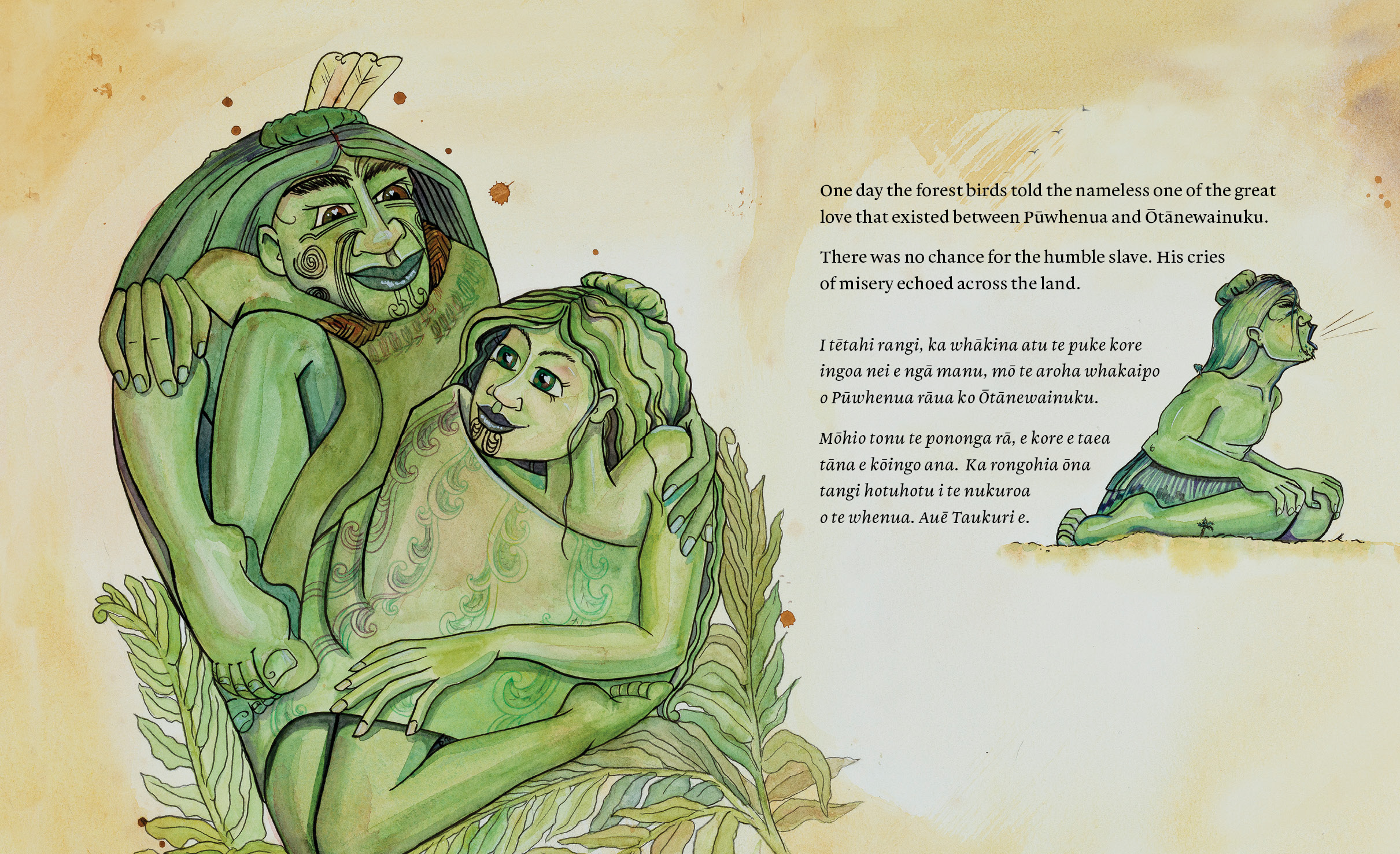
It’s surprising to see this significant Tauranga pūrākau being written by a Pākehā author, especially when Tamoe Ngata (Ngāti Porou, Ngāti Ranginui and Ngāiterangi) wrote, translated, illustrated and then launched her own Mauao bilingual book for tamariki just a month earlier. Debbie McCauley says that she is ‘passionate about telling stories from our own backyard…not only to educate and improve children’s literacy, but to help them connect and develop a sense of place, and a sense of pride, in their surroundings.’
Mauao is certainly a beautiful and treasured maunga in Tauranga Moana and it’s wonderful to see these books making its story available to a wider audience.
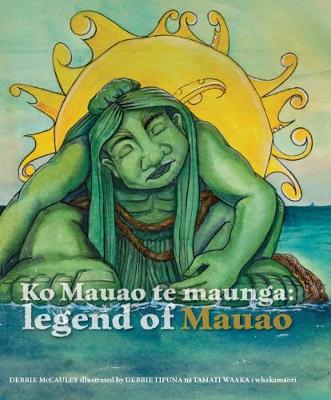
Ko Mauao te Maunga, Legend of Mauao
nā Debbie McCauley i tuhi, nā Debbie Tipuna ngā pikitia, ngā Tamati Waaka i whakamāoritia
Published by Mauao Publishing
RRP $35.95
Te Hīnga Ake a Māui i te Ika Whenua o Aotearoa, he mea kōrero anō nā Donovan Bixley, he mea whakamāori e Darryn Joseph rāua ko Keri Opai
Hinengākau, Te Kaponga & Mangō-Ururoa – Kāore he tino pai ki ahau te whakarerekētanga o te pūrākau, hei tauira; he tamaiti paku a Māui, nā ōna tuākana te toto i whakarere i tōna ihu; ki a mātou, ehara ērā ngā kōrero tika.
Hinengākau – He āhua kātune ngā pikitia, kāore he pai ki au.
Te Kaponga – He pai te reo Māori, i ako au ētahi kupu hou.
Mangō-Ururoa – He pai te wā ka āwhina ngā tuākana o Māui ki a ia ki te hī ika a Aotearoa.
This vibrant and funny book is really appealing to young readers, with endless details to pore over in the illustrations, much like Donovan Bixley’s other books.
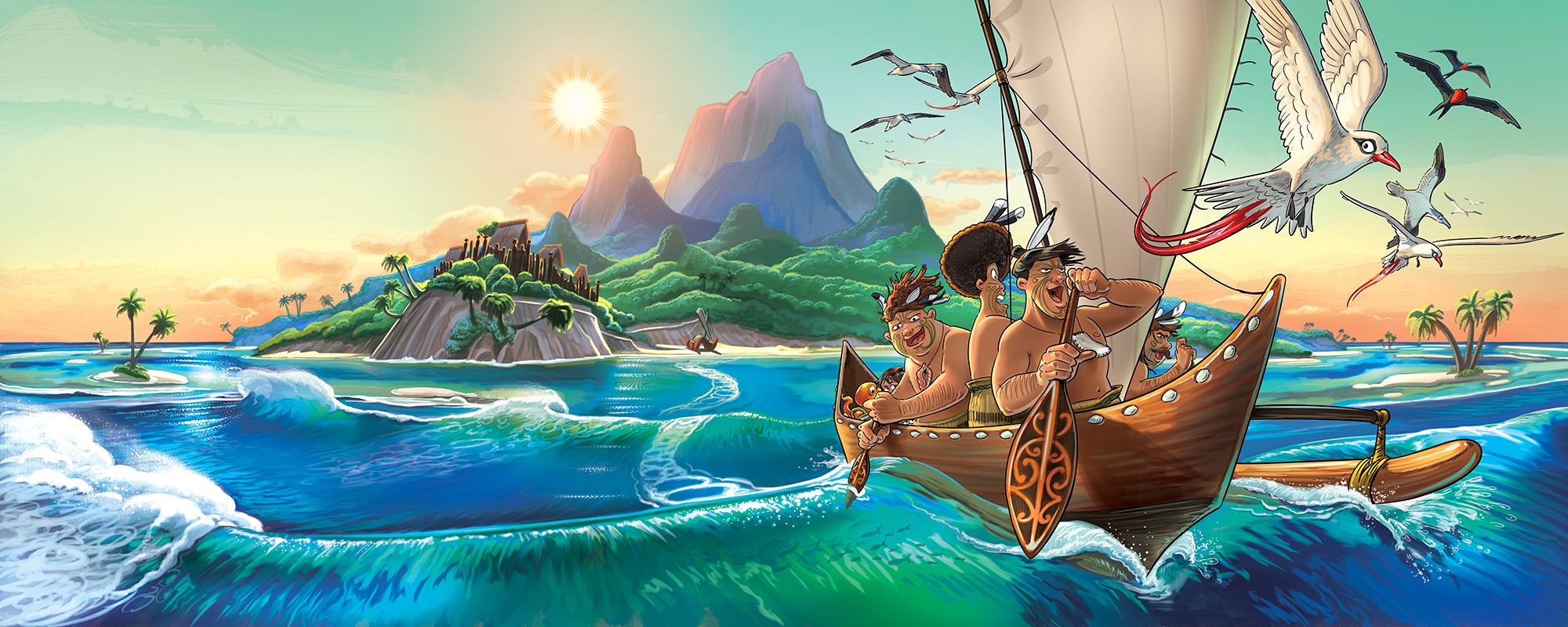
However, Te Hīnga Ake a Māui i te Ika Whenua is a taumata anō. Bixley has taken a leap from his recent bilingual vocabulary board books (First Board Book of Colours, Animals, Things That Go etc) and has retold the famous pakiwaitara of Māui fishing up Aotearoa with the support of Dr Darryn Joseph (who also translated this book, along with Keri Opai). He has done this in a manner which honours this very important and illustrious Maori tūpuna and shows his real desire to honour the cultural significance and importance of Māui.
The Māori translation is flawless. However, it is also complex, and the language isn’t especially accessible for anyone with an entry or intermediate level of fluency. Even my native-speaking, kōhanga-from-birth, reo-immersed irāmutu found kupu hou to learn! Which makes it great for building vocabulary, but it is unfortunately not really a ‘read aloud’ book. While the reo shows total mastery of the language, I couldn’t help but wish it was more learner-friendly.
The Māori translation is flawless. However, it is also complex, and the language isn’t especially accessible for anyone with an entry or intermediate level of fluency.
The colour palette of the illustrations and the cartoon-like depiction of the main characters will appeal to any young fans of Disney’s Moana movie. Lots of speech bubbles give it a comic book feel, too.
It was great to see how much te reo Māori has been woven into the English version too, something I hope to see more of in the future as we become an increasingly bilingual country. A ‘picture dictionary’ type glossary features on the inside front cover, to arm readers with some key new vocabulary. My favourite pages show young Māui complaining to his tuākana with some phrases very familiar to any parents; ‘Pēhea rā te tawhiti/How much further?’, ‘Kua rae rānei tātou/Are we there yet?’ ‘Kua hōhā kē au/I’m bored already’.
This title may remind you of Peter Gossage’s iconic books about Māori myths and legends from the 1970s and 1980s. His retelling and distinct illustrative style were unprecedented in New Zealand publishing at the time. They shaped a couple of generations of New Zealand tamariki in their interpretation of our indigenous stories and heroes. While these books have recently been released as a collection, sadly they are not bilingual as many of his early titles were. Gossage first published his version of the Fish of Māui in 1981 (translated by Merimeri Penfold). Donovan Bixley hints in the last page of his book (Pūrākau o Aotearoa as the cover suggests?) that there are more tales of Māui’s exploits to come, let’s hope that these too are published in te reo Māori, their language of origin.
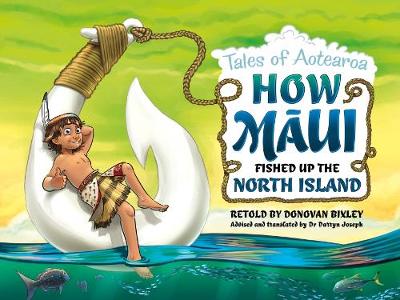
Te Hinga Ake a Maui i te Ika Whenua o Aotearoa
he mea kōrero anō nā Donovan Bixley, he mea whakamāori e Darryn Joseph rāua ko Keri Opai
Upstart Press
RRP: $20.00

Kay Benseman
Kay Benseman (she/her) is a collector of quirky children's books and kupu hou. In the 90s, she worked in a bookshop and had a 40% staff discount, and her bookshelves have never recovered. With a background in education and the cultural sector, she is now a writer/researcher and Māmā to two curious children. He tāngata Tiriti ia, Kay is Pākehā living on Ngā Rauru whenua in Whanganui.



